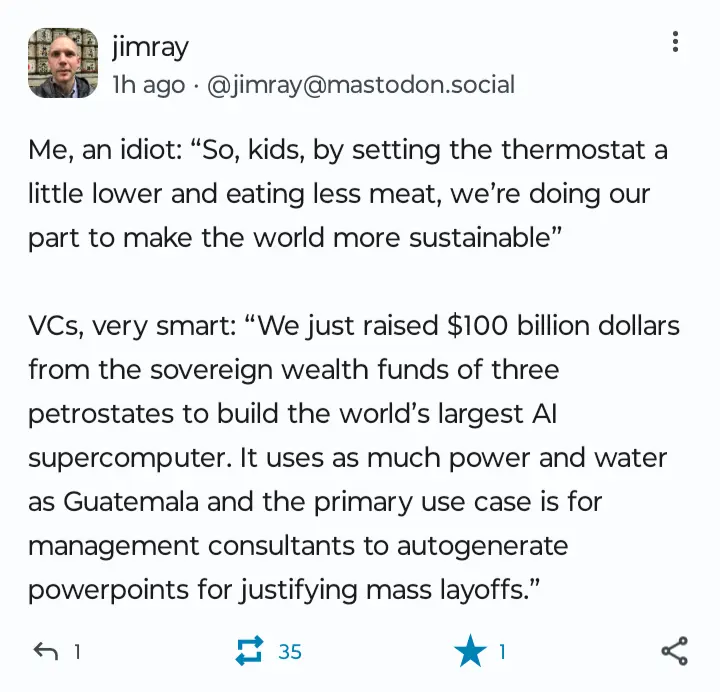this post was submitted on 21 Mar 2024
1984 points (98.7% liked)
Memes
45730 readers
1152 users here now
Rules:
- Be civil and nice.
- Try not to excessively repost, as a rule of thumb, wait at least 2 months to do it if you have to.
founded 5 years ago
MODERATORS
you are viewing a single comment's thread
view the rest of the comments
view the rest of the comments

I mean, there are good uses as well. Just as an example:
https://blog.google/outreach-initiatives/sustainability/report-ai-sustainability-google-cop28/
Even something like household phantom power currently uses more energy than AI at data centers.
I'm all for putting pressure on corporate climate impact and finally putting to rest the propaganda of personal responsibility dreamt up by lobbyists, but I don't know that 'AI' is the right Boogeyman here.
AI isn't the boogeyman, the corpos using it for dumb shit is.
Exactly: replace AI with "crypto mining" or any other waste of processing power in this paragraph and it is just as relevant...
I agree with your overall sentiment, but I personally find googles fuel savings optimistic and/or flat out misleading. "Hey, you could turn off your usual route here and get there in a similar time.... Or you could stay on your usual route and save 2% on gas" seems to be a very frequent occurrence for me.
I also don't think that needs AI. The pathfinding algorithm just needs to apply different weights to the choices based on things like changes in elevation, number of stop signs, total distance, etc. Navigation systems from yester-year could do this well before the prevalence of AI. That said, AI can be used to develop and/or tune these algorithms instead of having a dedicated team of humans focused on this specific area.
But see, that is AI, just not machine learning. It's classical AI.
How would contrails cause global warming? They're just condensation.
From the Report, Chapter 10.5.2:
The 2 papers listed which quantify the effect:
Thanks, I had no idea. I guess the crazy people from the 90's complaining about contrails weren't completely off-base about them being harmful.